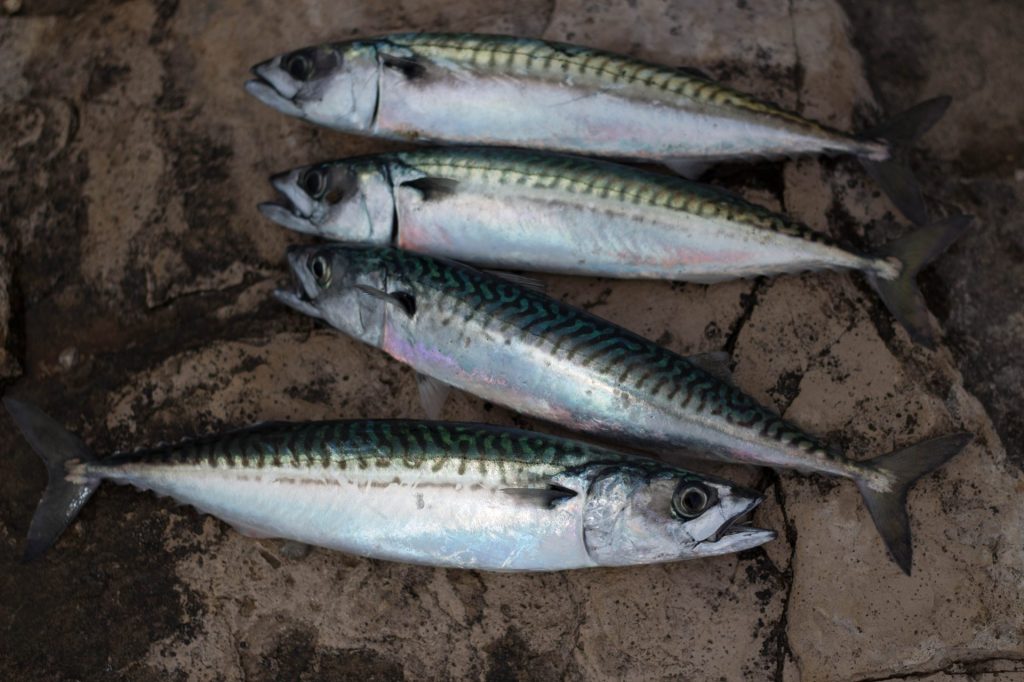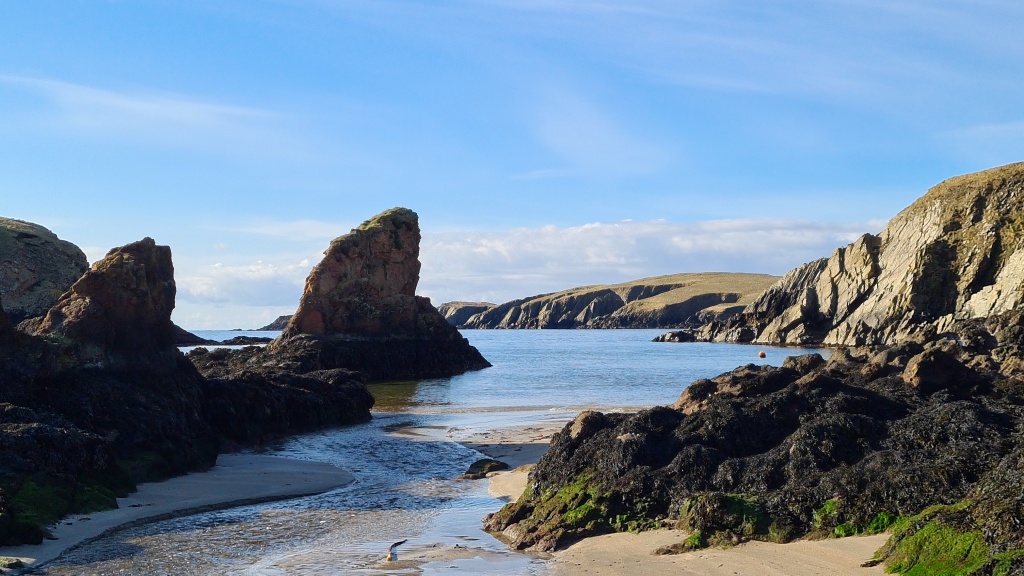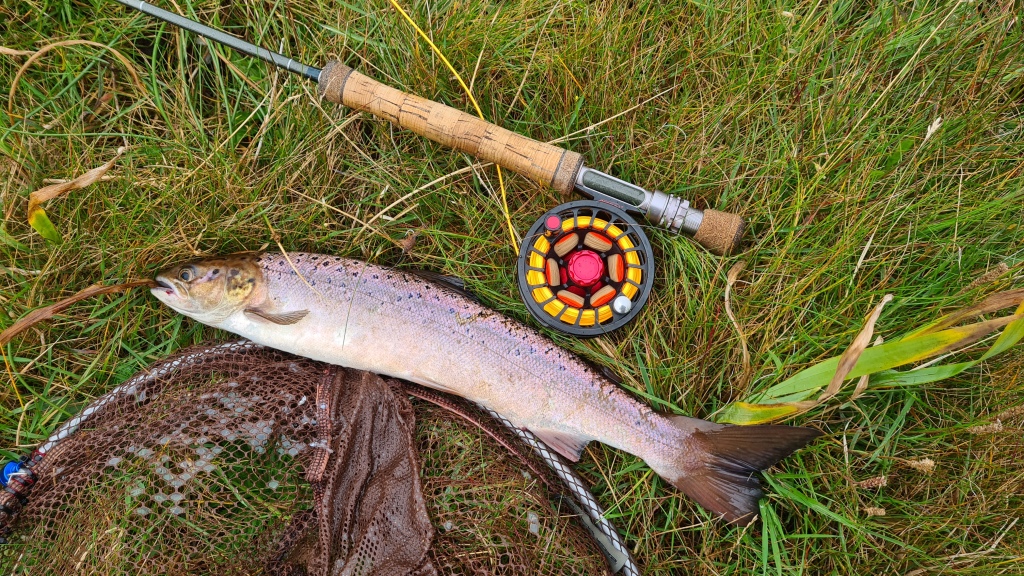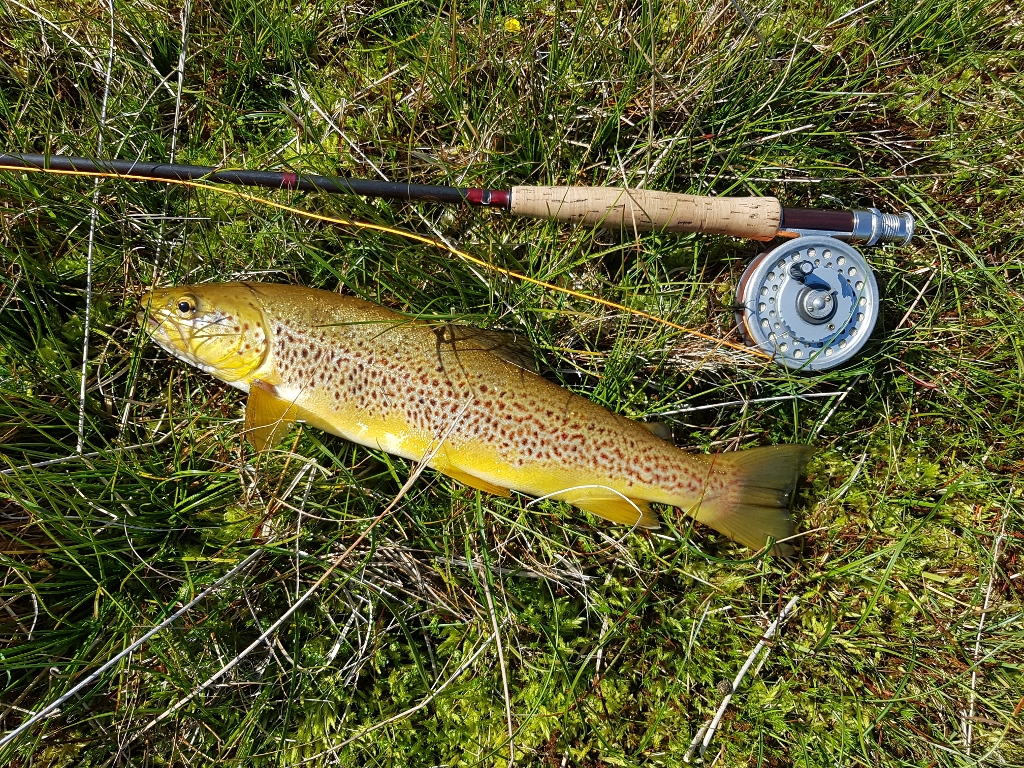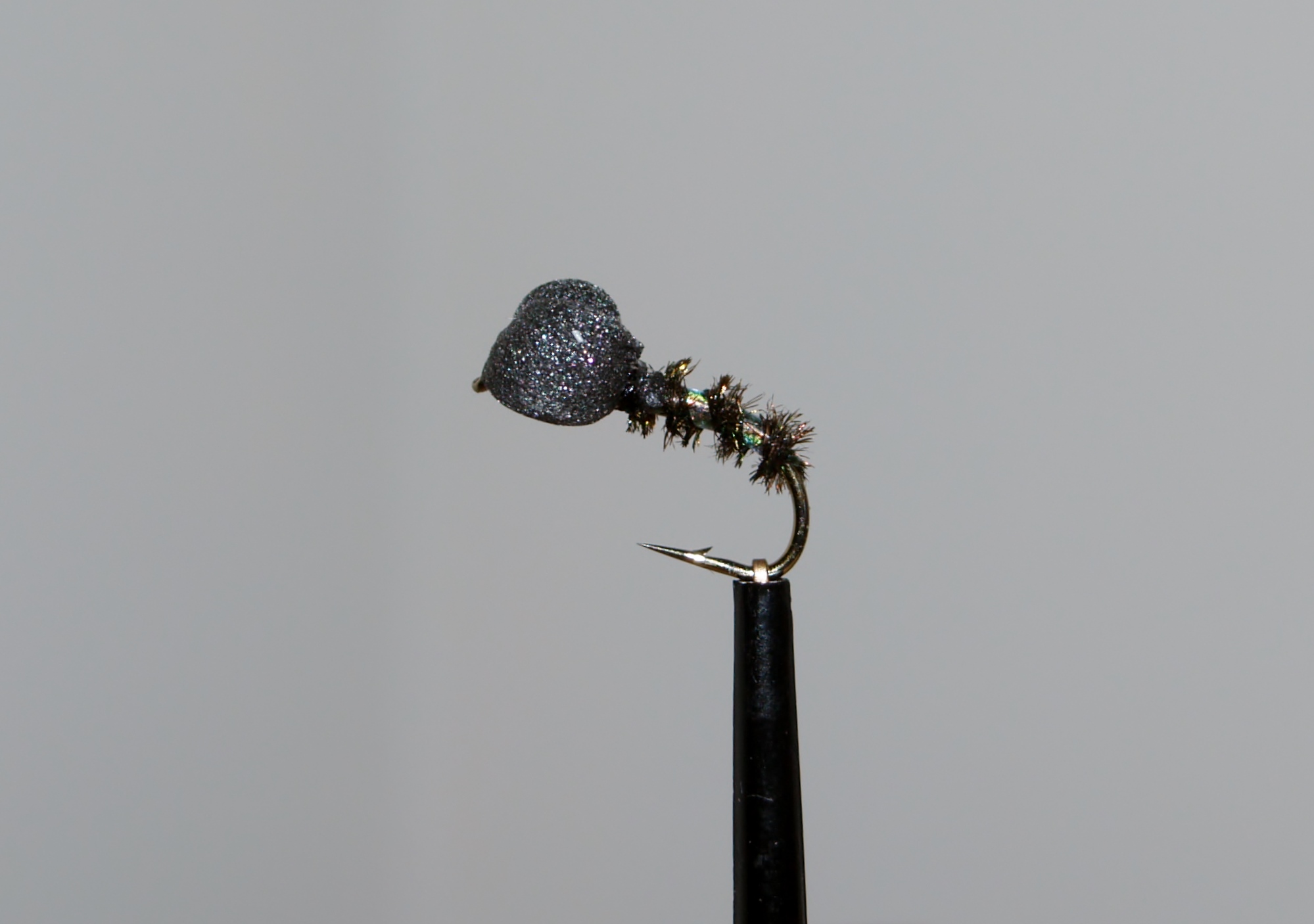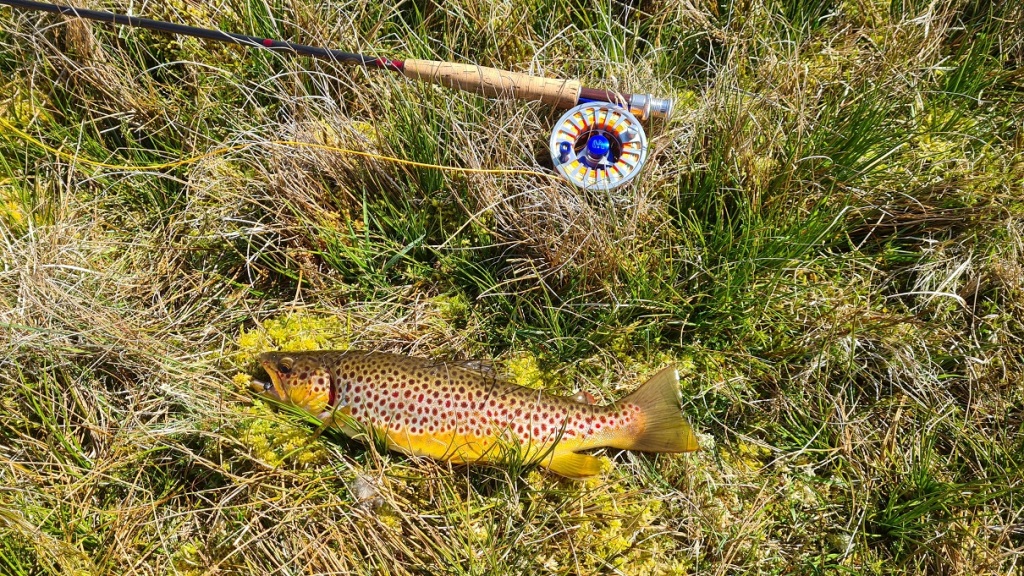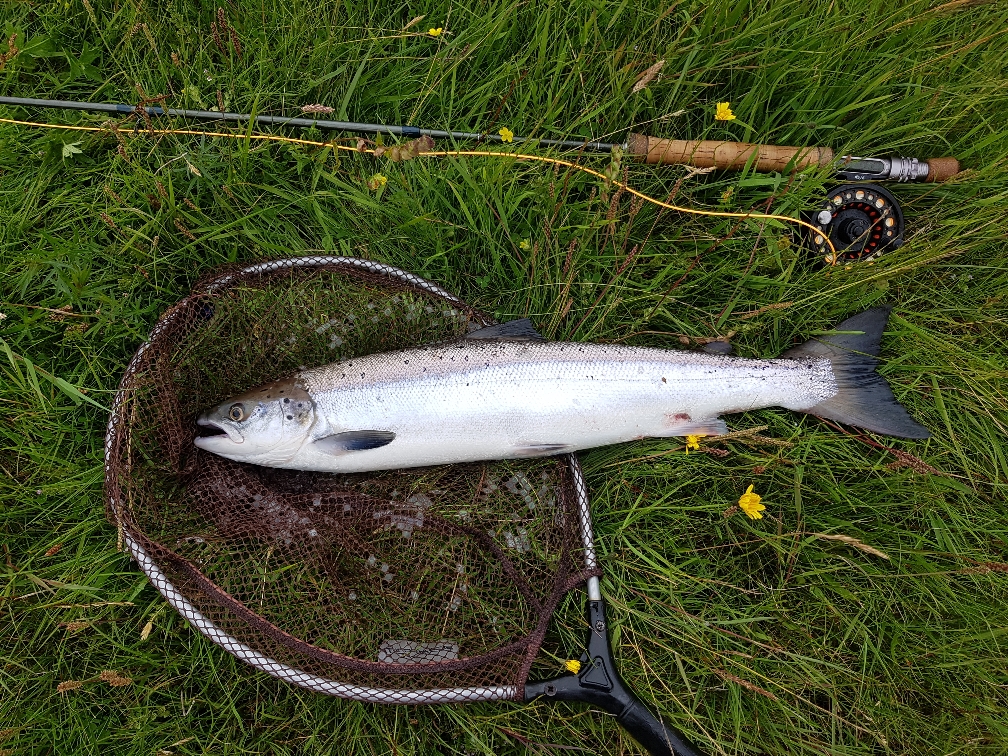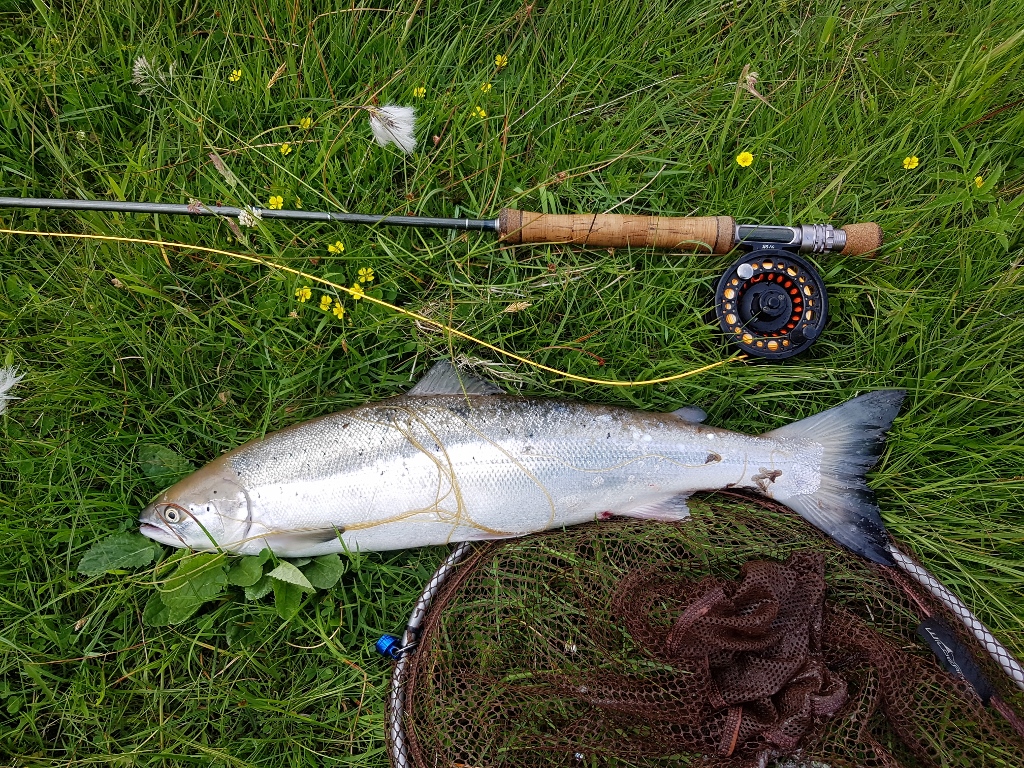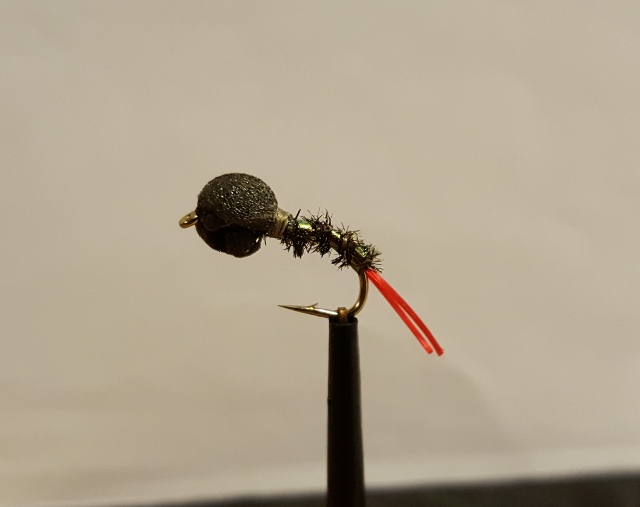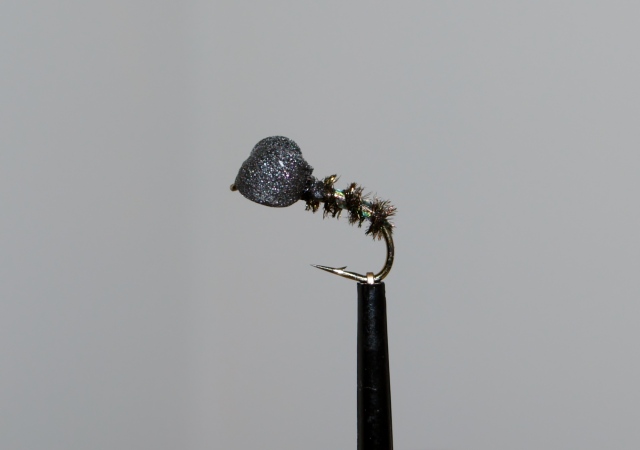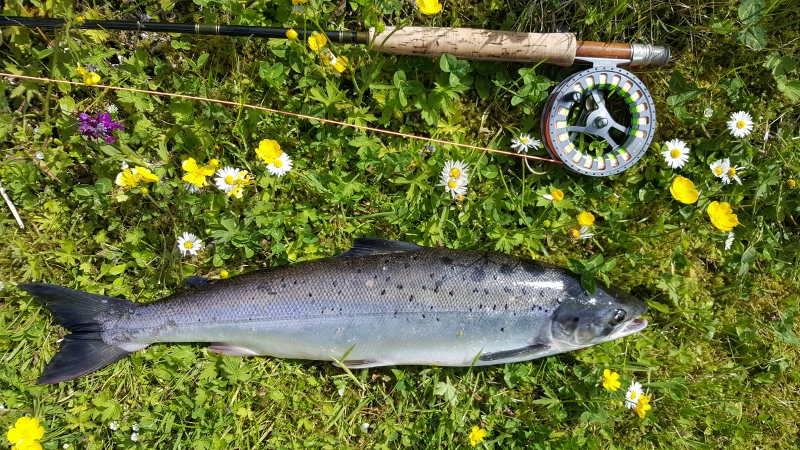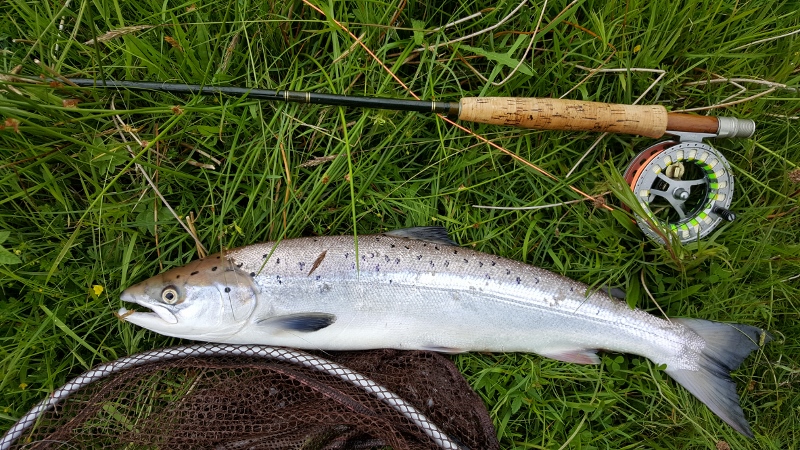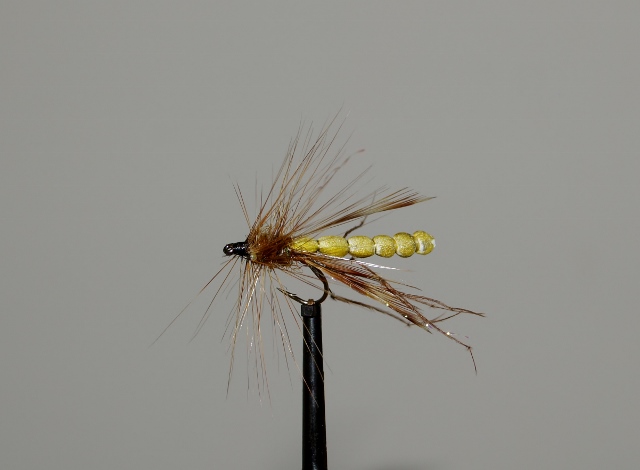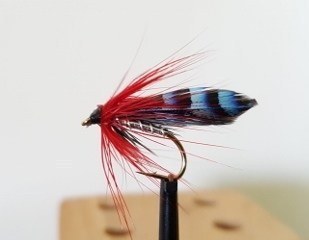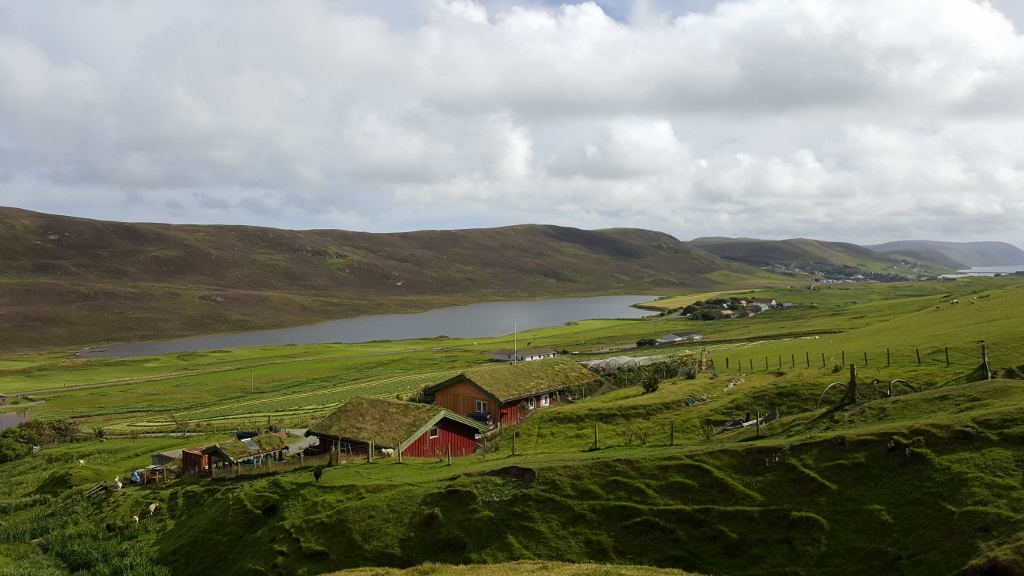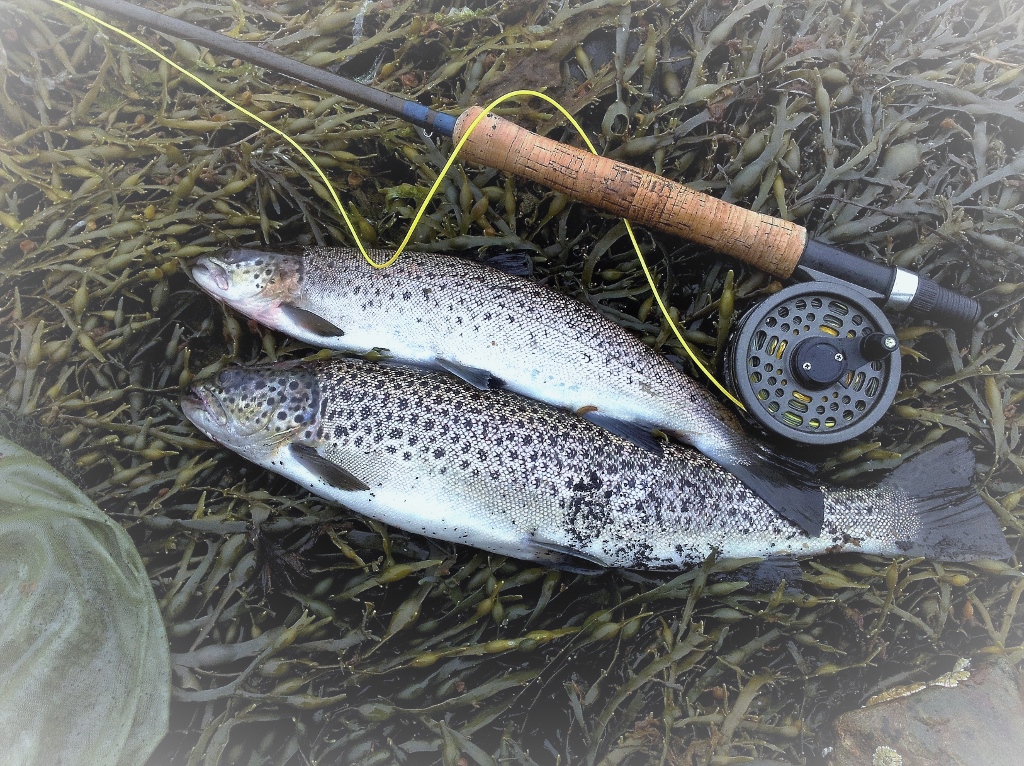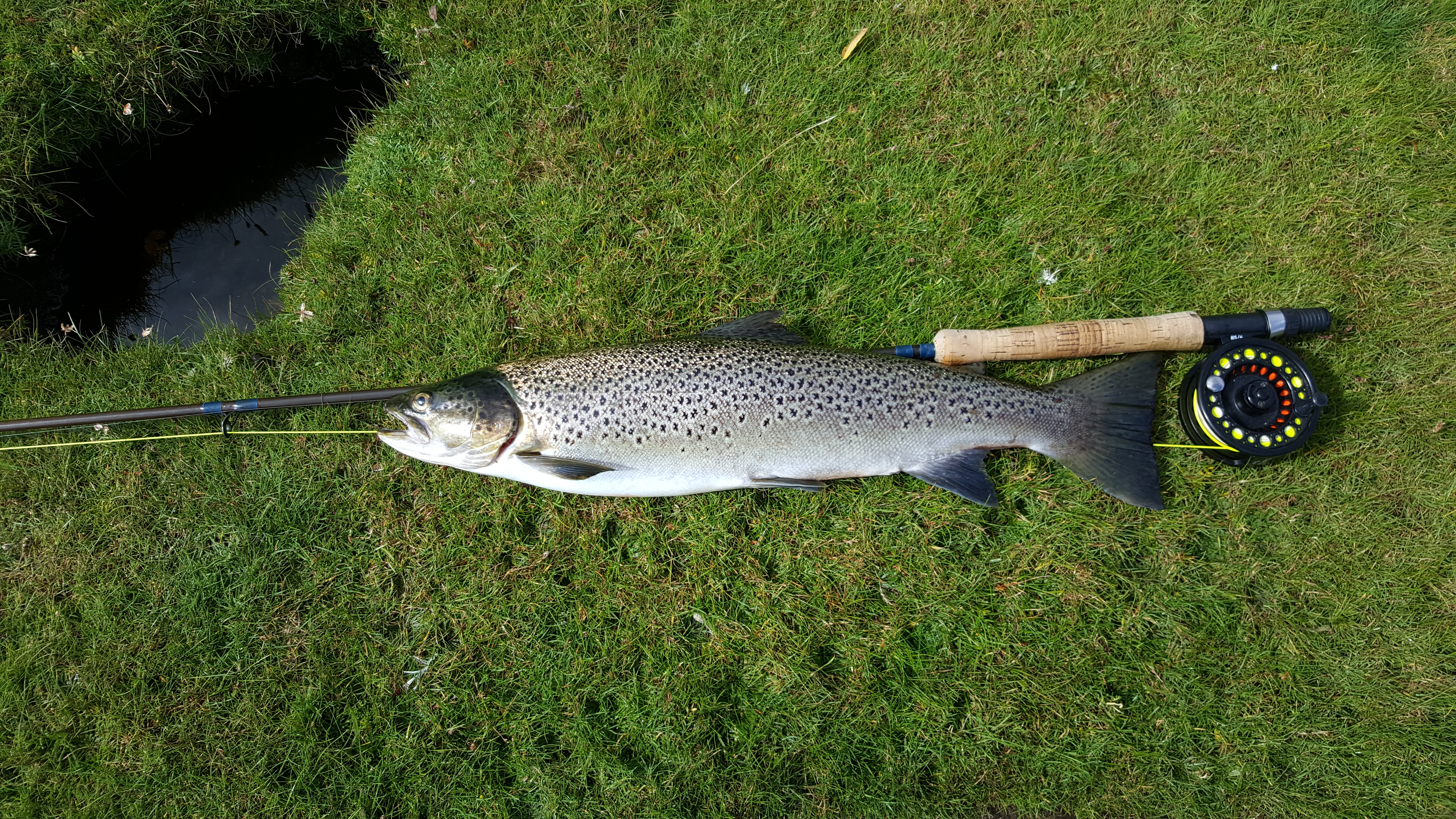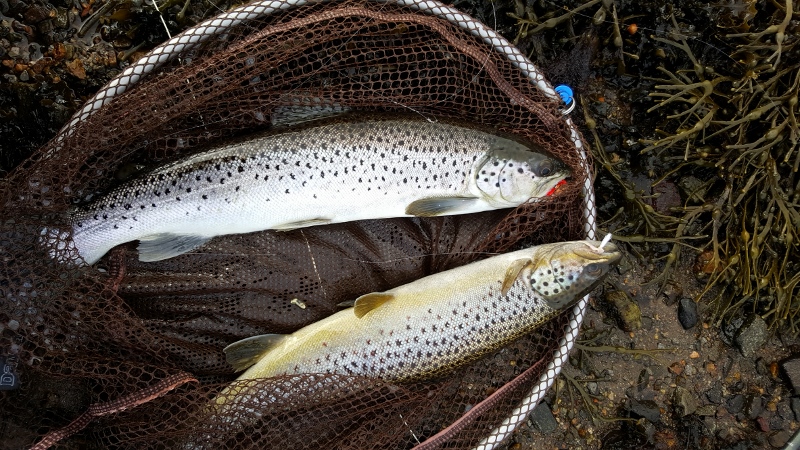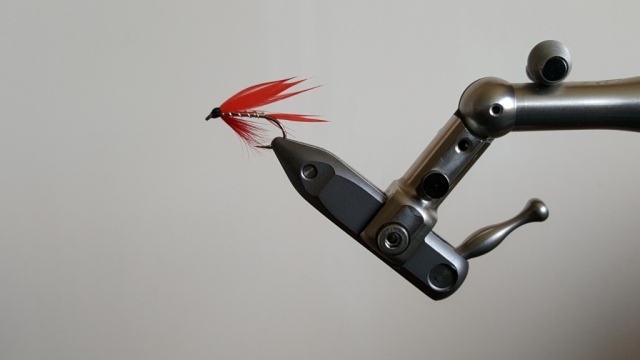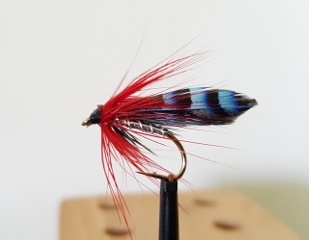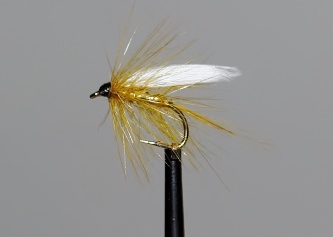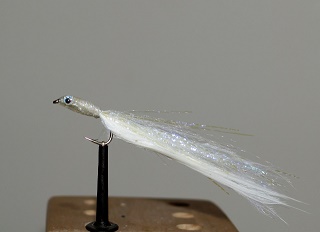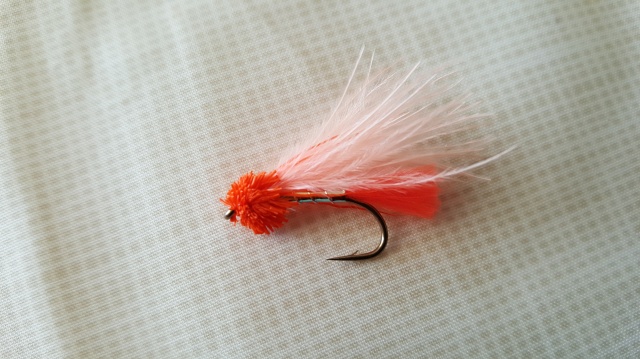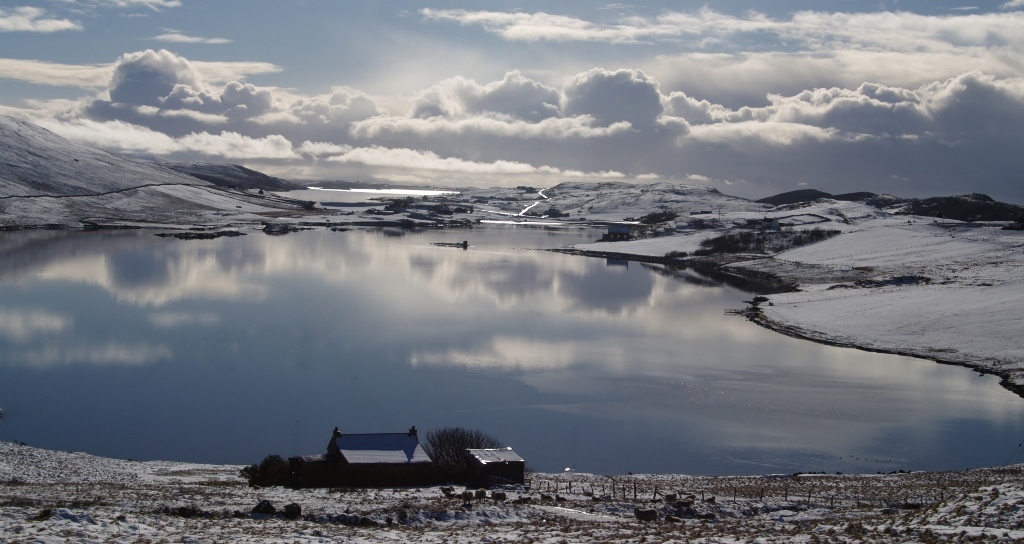Last week Shetland was hit by gale force winds which lasted two days and prevented me from fishing. It wreaked havoc with my garden too so you could say I was not in a good frame of mind. As the storm subsided my whole demeanour altered and my mood changed. I could go fishing again! My friend, who was itching to try out a shooting head line I had made up for him, turned up at my door so I quickly gathered my fishing gear and we sped off both with hope in our hearts for a good afternoon’s sport. We tried the lower reaches of a stream which, for the last hundred yards or so is deep and canal like. John had barely taken a couple of casts when his rod arched over as he played a good sea trout of around a pound and a half. He was delighted with the fish which he returned after a quick photograph. Little was showing to my flies. I had a size ten Silver Stoat on the tail and a Tan coloured Daddy long legs on the dropper. No sign of anything as I approached the top pool. Something told me to change the tail fly so I tied on a size 10 Orange Foam Daddy and within a few casts I felt something hit my tail fly. I slowly lifted the rod and a nice grilse lept out of the water and then proceeded to run past me. After a spirited fight I netted a lovely wee grilse of about 3lbs. My first one of the season! Delighted with our half hour’s fishing we sped off to another venue to try a bit of salt water sea trout fishing. We became aware that there were sprats in the voe by the large numbers of arctic terns skimming the surface of the water and the odd splash of sea trout. Every now and then a shower of these little fish peppered the surface of the water as fish chased them. John fished his way further up the voe and was no longer in view. I changed my Orange Daddy for my White Sand Eel pattern and was soon connecting with sea trout up to about 2lbs. I moved further down the voe to a deep hole where fish usually go at low tide. There were mackerel here and I spent the next 15 minutes or so playing and landing about half a dozen mackerel which took a fancy to my Sand Eel. They were great fun on light tackle as every time I lifted the rod to try and net them they made off in darting runs.
I could see John coming towards me looking a bit down. Sitting down on the bank he told me he had just lost a lovely silvery salmon. It had taken a red soldier palmer I had tied for him and broke his cast after jumping several times before it severed his cast just before he tried to net it!
Well that’s fishing for you! Sometimes you are left with a haunting memory of what could have been.
All in all it was a memorable half day’s fishing with two salmon hooked one caught, countless sea trout up to 2lb 4oz and a few mackerel besides. I would dearly loved my friend to have caught his salmon. Never mind, another time perhaps. Fishing isn’t just about catching fish, it’s about fond memories and friendships too!





